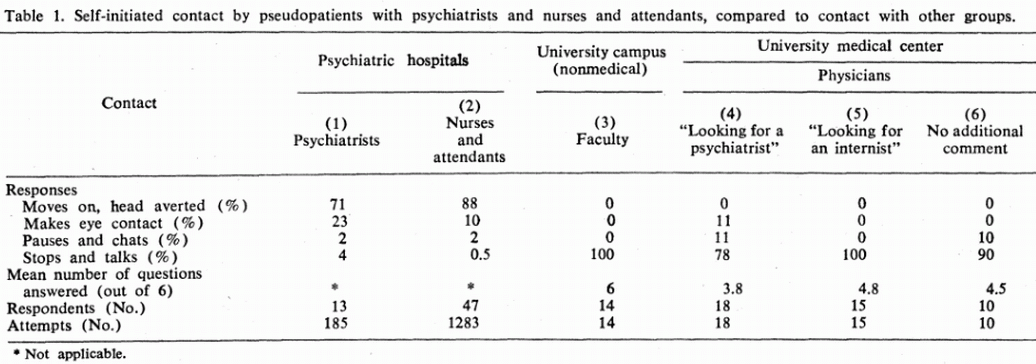A couple of weeks ago a tribunal in the UK decided that Ian Brady – probably the country’s most famous living killer – should remain in a high-security psychiatric hospital, rather than being sent to a prison as he wanted. The case was heard in public, which I think is only the second time this has happened, the precedent having been set in a case called Albert Haines v. West London Mental Health Trust (in which MDAC intervened.)
At the tribunal, Brady’s lawyers argued that he did not have paranoid schizophrenia, and had never been mentally ill since he was jailed for life in 1966. The outcome of the case was that he has to stay in hospital – no surprise there. What I want to concentrate on in this blog post is a miniscule detail of the case. That is, the hospital said that the fact that Brady talks to himself is a sign of his mental illness. Brady’s lawyers said that this wasn't a sign of mental illness at all, and could be easily explained as Brady being “an elderly, socially isolated man talking to the television”.
Summer school scheming
We’re teaching our annual two-week summer school in Budapest right now. Éva Szeli is a psychologist and lawyer who is a faculty member with us. Every year she leads a session about stigma and labelling. Éva explained some basics of cognitive psychology. You operate within a schema (a framework) in which you will notice information which is consistent with that schema. You will interpret the information in a way that fits the schema. You will be able to recall things which fit the framework rather than those information which doesn’t. So perhaps Brady talking to himself a sign of mental illness (the schema)? But equally perhaps it has nothing to do with his supposed mental illness?
 Éva Szeli
Éva Szeli
Empty, hollow, thud
In her class, Éva used an example from the 1970s to demonstrate the fallacy of diagnosing madness. David L. Rosenhan was a professor of psychology, who taught Éva when she was an undergraduate. He wrote one of the most widely read papers in psychology. It was published in the magazine Science in 1973 and is called “On being sane in insane places”.
The study went like this. Eight researchers checked themselves into a total of 12 psychiatric hospitals in the USA. On admission they said they were hearing three words: empty, hollow and thud. They presented with no other symptoms. All eight were admitted as inpatients. They behaved in their ordinary way, in other words they did not pretend to be someone they weren’t. They took notes about their experiences (they were research geeks, after all). The length of their hospitalisation ranged from 7 to 52 days, with an average of 19 days. All of them were discharged with a diagnosis of schizophrenia in remission and forced to agree to take antipsychotic drugs as a condition of their release.
 David L. Rosenhan (photo credit: www.autismovaccini.com)
David L. Rosenhan (photo credit: www.autismovaccini.com)
Powerlessness was evident everywhere
Much of the Rosenhan study presents his researchers’ experiences of being hospitalised. Essentially they became eight undercover spies within psychiatry. Rosenhan wrote that “[p]owerlessness was evident everywhere.” He continued:
The patient is deprived of many of his legal rights by dint of his psychiatric commitment. He is shorn of credibility by virtue of his psychiatric label. His freedom of movement is restricted. He cannot initiate contact with the staff, but may only respond to such overtures as they make. Personal privacy is minimal. Patient quarters and possessions can be entered and examined by any staff member, for whatever reason. His personal history and anguish is available to any staff member (often including the “grey lady” and “candy striper” volunteer) who chooses to read his folder, regardless of their therapeutic relationship to him. His personal hygiene and waste evacuation are often monitored. The water closets have no doors.
As you can imagine, the psychiatric fraternity got pretty upset with Rosenhan. They felt cheated and deceived. So they went on the attack. Send us more pseudo-patients and we will spot them, one hospital said. Rosenhan agreed. He told the hospital that during the following three months, he would send one or more pseudo-patients to be admitted there.
After three months, all staff who had contact with patients (healthcare assistants, nurses, psychiatrists, psychologists and others) were asked to make judgments. There were 193 patients who were admitted for treatment during this time. At least one member of staff identified “with high confidence” 41 of these patients to be pseudo-patients. A further 23 patients were considered suspect by at least one psychiatrist, and 19 more were suspected to be pseudo-patients by one psychiatrist and one other staff member.
 Table from Rosenhan's article (source: www.bonkersinstitute.org)
Table from Rosenhan's article (source: www.bonkersinstitute.org)
Oops
In actual fact, Rosenhan sent no pseudo-patients to the hospital during the three-month period. It’s an astonishing finding. The hospital staff were willing to detain many people who then they thought were faking it. What does that tell us about the accuracy of diagnoses? Rosenhan says that it “indicates that the tendency to designate sane people as insane can be reversed when the stakes (in this case, prestige and diagnostic acumen) are high”, noting that “one thing is certain: any diagnostic process that lends itself too readily to massive errors of this sort cannot be a very reliable one.”
It’s these “massive errors” which often result in human rights abuses, which is what we’re studying during our two-week summer school.